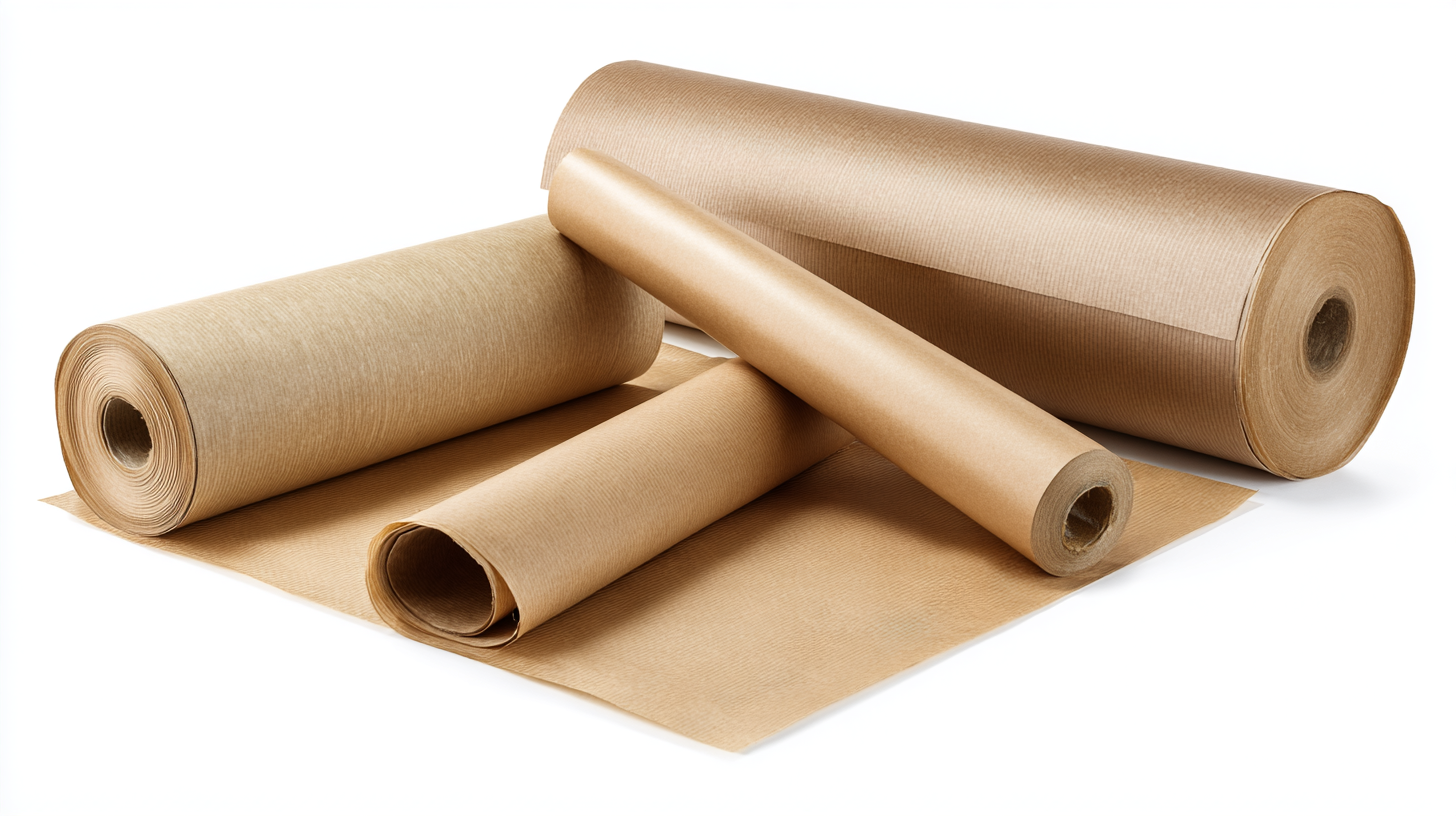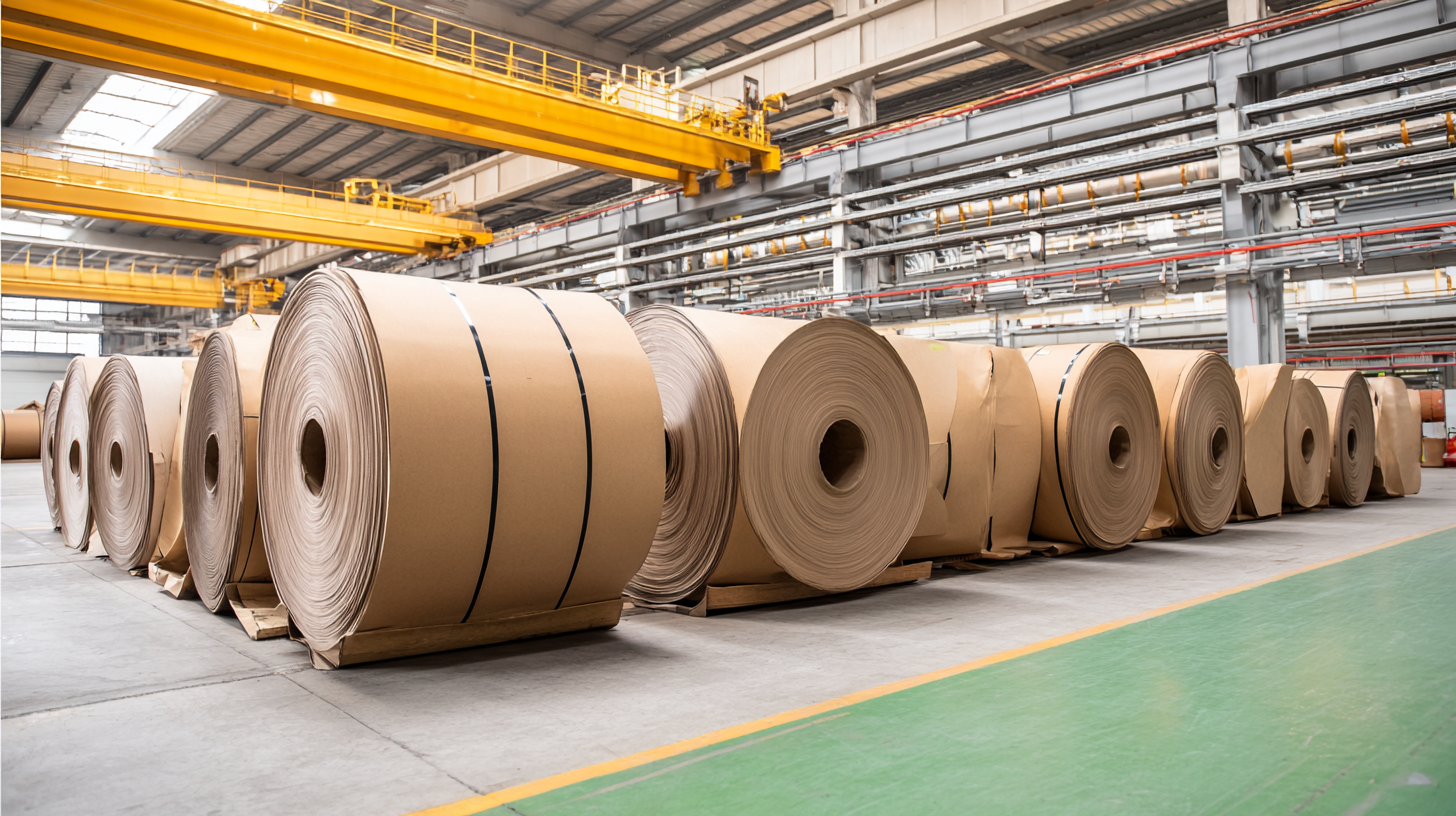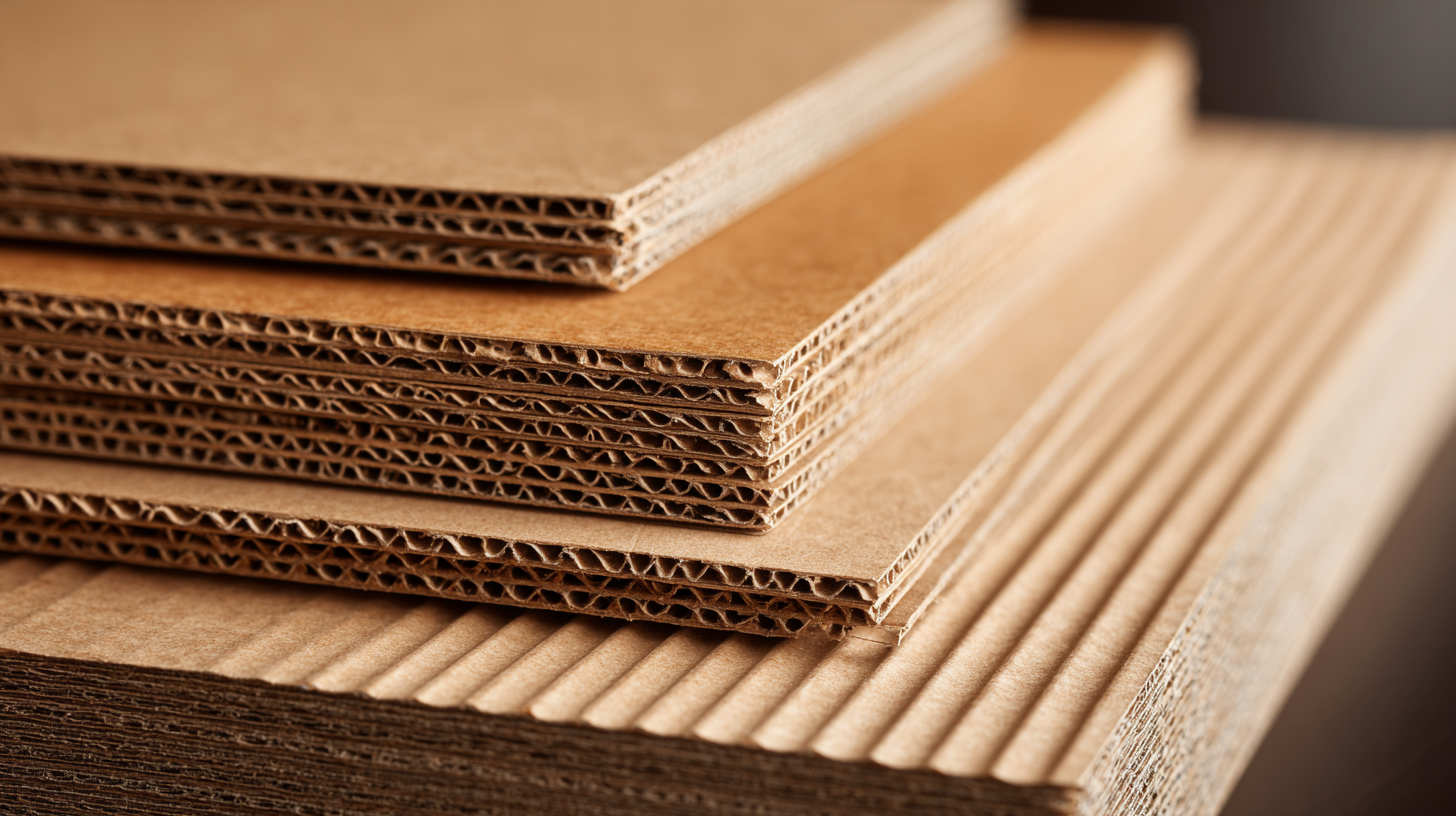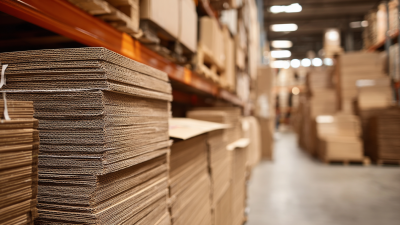
In today's rapidly evolving logistics landscape, choosing the right packaging solution is paramount for efficient shipping operations. Kraft Slip Sheets have emerged as a sustainable and cost-effective alternative to traditional wooden pallets, gaining traction across various industries. According to a report by Freedonia Group, the demand for slip sheets is expected to reach over over $1.1 billion by 2025, reflecting a significant trend towards lighter and more environmentally friendly shipping options.

With their ability to reduce shipping weights and optimize container space, Kraft Slip Sheets offer not only economic benefits but also align with global efforts to minimize environmental impact. However, selecting the most suitable Kraft Slip Sheets for specific shipping needs requires careful consideration of factors such as load capacity, dimensions, and compatibility with handling equipment.
This guide aims to provide insights into making informed choices about Kraft Slip Sheets to enhance your shipping efficiency.
When selecting the appropriate kraft slip sheets for your shipping needs, it is essential to understand the different types available. Kraft slip sheets come in various grades and finishes, primarily categorized into light-duty, medium-duty, and heavy-duty options. According to a report by Market Research Future, the global slip sheet market is projected to grow at a CAGR of 6.5% from 2020 to 2027, highlighting the increasing preference for cost-effective and sustainable shipping solutions. Light-duty sheets are best suited for less heavy loads, while heavy-duty slip sheets can support weights exceeding 2,500 pounds, making them ideal for larger shipments.
Tips: When choosing kraft slip sheets, consider the weight and dimensions of your cargo. For heavy items, opt for thicker and sturdy sheets to avoid tears during transit. Additionally, check the moisture resistance of the sheets, especially if your shipments might be exposed to wet conditions, as this can significantly affect the integrity of the sheets and the safety of the load.
Incorporating slip sheets can also lead to efficiency savings in storage and shipping. A study from the Institute of Scrap Recycling Industries indicates that using slip sheets can reduce packaging waste by up to 25%. This not only enhances sustainability efforts but also minimizes costs associated with traditional pallets. Consider your specific shipping needs and explore high-quality kraft slip sheets that align with your operational goals.
When selecting kraft slip sheets for your shipping needs, there are several key factors to consider that can significantly impact your operations. First and foremost, it is essential to assess the weight and size of the products you will be shipping. Different slip sheets come in varying thicknesses and dimensions, so ensuring that the slip sheets can adequately support the load is crucial for stability during transport. Additionally, the slip sheets should fit within your shipping system and be compatible with the equipment used in your warehouse.
Another vital consideration is the environmental impact of the slip sheets. Opting for recyclable and biodegradable kraft slip sheets not only helps in reducing waste but also positions your business as environmentally responsible, which can be a selling point for eco-conscious consumers. Moreover, consider the cost-effectiveness of the slip sheets; balancing quality with price will ensure that you are optimizing your shipping budget without compromising on performance. By taking these factors into account, you can select the right kraft slip sheets that align with both your operational needs and sustainability goals.
| Factor | Description | Recommended Type |
|---|---|---|
| Load Capacity | Determine the maximum weight the slip sheet will need to support. | Heavy-duty Kraft Slip Sheets |
| Size Compatibility | Ensure the slip sheets match the dimensions of your pallets or products. | Custom-sized Slip Sheets |
| Material Thickness | Consider the thickness for better durability and support. | Thick Kraft Slip Sheets (usually 0.125” or more) |
| Environmental Impact | Choose recyclable options to minimize your environmental footprint. | Recyclable and biodegradable Kraft Slip Sheets |
| Cost Efficiency | Analyze the cost per unit based on your shipping volume. | Bulk Purchase Options |
 When it comes to shipping efficiency, the choice between Kraft slip sheets and traditional pallets can significantly impact operational costs and effectiveness. Kraft slip sheets, being lightweight yet durable, can help reduce shipping weight and ultimately save on freight costs. They occupy less space compared to pallets, allowing for more products to be loaded into a single shipping container. This space-saving design not only maximizes transportation efficiency but also minimizes the environmental impact associated with shipping processes.
When it comes to shipping efficiency, the choice between Kraft slip sheets and traditional pallets can significantly impact operational costs and effectiveness. Kraft slip sheets, being lightweight yet durable, can help reduce shipping weight and ultimately save on freight costs. They occupy less space compared to pallets, allowing for more products to be loaded into a single shipping container. This space-saving design not only maximizes transportation efficiency but also minimizes the environmental impact associated with shipping processes.
In contrast, traditional pallets, while widely used and recognized, can pose challenges in terms of weight and space utilization. They are generally bulkier and can lead to higher transportation costs due to the extra weight. Additionally, pallets may require more handling equipment, which can slow down the logistics process. When evaluating your shipping needs, it's essential to consider the specific requirements of your products and shipping methods. The increasing trend toward sustainability also highlights the advantages of Kraft slip sheets, as they are often made from recyclable materials and can be a more eco-friendly option in modern shipping practices.
When selecting Kraft slip sheets for shipping, understanding load capacity and strength ratings is crucial for ensuring safe transport. Load capacity refers to the maximum weight a slip sheet can support, while strength ratings often indicate how well the material can withstand stress without failing. These parameters help in selecting the appropriate slip sheet that can hold the weight of your products without compromising safety or structural integrity during transit.
It is essential to consider the specific requirements of your shipment. For example, heavier loads may necessitate thicker and sturdier Kraft slip sheets, which can better distribute weight and reduce the risk of damage. Additionally, understanding environmental factors such as moisture exposure and temperature variations will further guide your choice. Always review the manufacturer's specifications and conduct tests when possible to ensure the slip sheets meet your shipping needs, providing peace of mind that your items will arrive at their destination intact.
Kraft slip sheets offer a cost-effective solution for businesses looking to streamline their logistics and supply chain management. By replacing traditional pallets, these lightweight sheets reduce shipping costs and optimize loading efficiency. Businesses can save on materials and shipping fees, as slip sheets require less space and weight compared to standard pallets. This is particularly advantageous for companies shipping large quantities of goods, where every ounce of material counts toward overall transportation costs.

Additionally, utilizing Kraft slip sheets contributes to sustainability efforts within supply chains. Made from recyclable materials, they diminish the need for wood pallets, which can lead to wastefulness and increased environmental impact. Companies that prioritize eco-friendly practices can enhance their brand image while also enjoying financial savings. Overall, the choice to implement Kraft slip sheets in logistics not only boosts cost-effectiveness but also aligns with modern sustainability goals, making it a compelling option for forward-thinking businesses.












